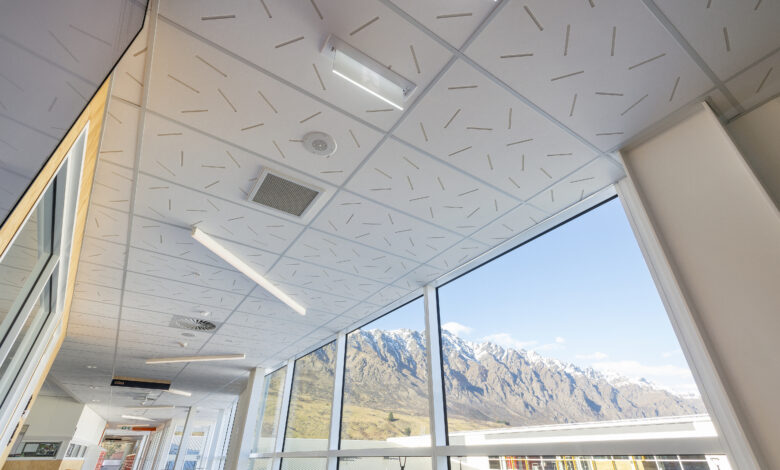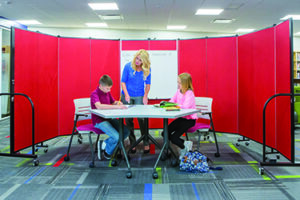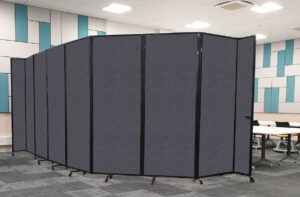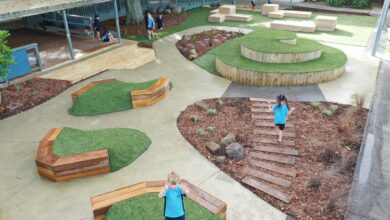Hear more, shout less!

“What was that, Miss?” The negative implications of poor classroom acoustics are wide ranging and can have deep, lasting impacts way beyond the classroom environment.
“Poor classroom acoustics amplify noise, which disrupts comprehension, mental cognition and engagement. These effects are amplified tenfold for those with disabilities or a second language,” according to research published in September 2020, by AUT PhD scholar in built environment engineering, Megan Burfoot.
“Classroom design has changed enormously,” says Burfoot. “Modern learning environments are dynamic and vibrant. Unfortunately, despite their modern design, the acoustics of the classroom are all too often neglected, which affects learning and can result in voice disease for teachers. The implications in terms of motivation to learn and on general wellbeing are serious.”
Burfoot’s research provides ‘a dynamic solution to classroom acoustics’. “The system I’ve developed recognises that dynamic changing spaces need dynamic changing reverberation times,” she says. “It uses intelligent algorithms to interpret the sound waves, categorise the exact activity then calculate the required rotation of the louvres. The reverberation is optimised in real time, meaning both students and teachers have a better classroom experience.”
The system, which Burfoot says would be useful from primary to tertiary education settings, is being tested in five classrooms, with the hypothesis being that it ‘should enhance voice clarity and aural comprehension, and enhancing connectedness in the classroom’.
Background noise in New Zealand classrooms is believed to generally range between 28 – 60 dB, according to The Oticon Foundation. The Ministry of Education currently requires that ambient noise levels in a classroom, or flexible learning space, should not exceed 35 – 45 dB.
Not only are students disadvantaged by poor acoustics. What invariably follows the request to repeat information is a teacher raising their voice to be heard more clearly. Speaking loudly for lengthy periods of time can lead to vocal strain, which, for teachers, is recognised as being a serious occupational hazard.
Acoustic observations and advice from the industry
All schools have very similar needs but quite a varied range of solutions required to meet them, according to Brandstand NZ representative, Richard Spicer. He shared some observations with us that he noticed over the last 12 months and during lockdown, where “teachers and schools really had to think on their feet and implement never before seen on that scale remote learning initiatives that taxed technology and teachers to the max.
“The key consideration has to be flexibility; to be able to manipulate the acoustic screens in more than one way to be able to create varied learning spaces from the existing building footprints.
“More classrooms are accommodating teacher aids within the teaching environment than ever before: students that require teachers aids benefit from less noisy atmospheres in which to learn.”
Cross contamination during a shared classroom situation can have detrimental outcomes for all those involved, teachers, aids, and students. Ideally, each class of students and their teachers would have their own classroom.

Due to many reasons, including population increase and a lack of funding for increased infrastructure within the school system, many schools with the ability are dividing classrooms to create multiple learning areas. It is only after creating these split learning environments that schools are becoming aware of these acoustic issues as these issues are generally not considered early in the planning process.”
Versare’s manager, Chris Davies explained that with the right acoustic tools, “one multi-purpose classroom can be quickly and easily transformed into a dual activity space, a group learning area, a break-out space or a one on-one student and teacher meeting area as needed, essentially a classroom that limits distractions.”
He offered some advice to schools in the process of a major redesign or new build: “It is a great opportunity to rethink how students learn best and to craft an environment that supports them. But schools should consider the impact of their spaces on student success whether they are able to make big changes or not.
Teachers can redesign their rooms to offer students more opportunities to direct their own learning, with separate activity areas, spaces for group collaboration and more.

Tools like whiteboards, portable partitions, and flexible seating can help. Wall-mounted acoustic panels can aid in managing noise levels and incorporating a few plants into the room will add a natural element and take your classroom to the next level.
“The addition of portable room dividers is important as they open the door for a variety of space options beyond dividing a classroom. In addition to providing a physical barrier, portable room dividers also provide noise reduction properties, critical to learning and teaching. They offer seclusion and remove potential distractions within a classroom, creating an environment that promotes productivity and focus.”
According to Asona’s managing director, Neil Ridgway, the “big change” for schools to be aware of is that “NZ classrooms now have a new acoustic standard to meet, which applies to all new build and refurbishments”.
“Good acoustics improved the learning outcomes of students and make the spaces better for teachers. There is a lack of understanding of good acoustics with how different materials behave. This is a big reason why the new DQLS 3.0 mandatory requirements have come in, there is also more involvement from acoustic engineers.”
His advice is for schools to engage a qualified acoustic engineer during the design process, and to read all the DQLS documents and quick guides. “New schools would have better thermal insulation, warmer roof designs, and better room acoustics with balanced reverberation times from low to high frequencies. Ventilation rates are also being improved to provide more fresh air and vent away unwanted CO2, humidity and odours.”
Offering his key considerations for balancing acoustics in flexible learning environments, he said: “Better use of broadband sound absorbers in the ceiling and walls, ideally 40 to 50 mm thick so that low and mid frequencies can be absorbed, would be beneficial. Most classrooms only have thin 8 mm carpet tile and 10 mm polyester wall coverings, which only absorb sound at high frequencies. This results in unbalanced acoustic RT spectrum and reduced speech intelligibility.”









